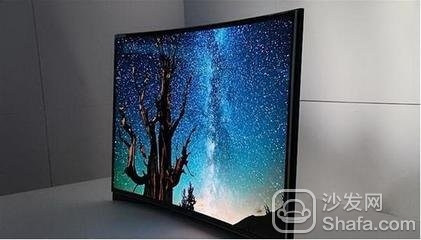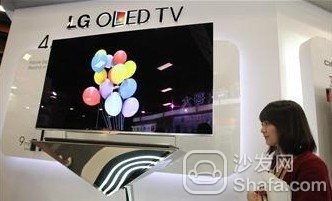Once upon a time, plasma was one of the most mainstream television imaging technologies, with the most outstanding display effect, but it has now been eliminated by the times. Although LCD technology has dominated the market and is constantly evolving, due to the underlying limitations, poor contrast and non-uniformity are still inevitable. As a result, OLEDs have emerged as plasma replacements that eliminate the need for backlighting, enable ultra-slim fuselage and even bend, and at the same time provide unparalleled image quality. However, only one LG manufacturer currently sticks to the OLED camp.

OLED TV market status
In the past season, the cheapest OLED TV is the LG 55EC9300, priced at 3,000 US dollars (about 18606 yuan), still higher than the mainstream LCD TV prices in the market. Of course, its contrast and black levels are better than LCD TVs. But even so, the average consumer cannot afford this price.
David VanderWaal, the senior director of LG Marketing, said this is normal and the company does not expect to sell a large number of OLED models in 2015. At the same time, LG does not expect OLED TV prices to be too low, otherwise it will affect the financial status of the company. Obviously, the average price of a 4K LCD TV with the same size is only one-third of that of OLED. This huge price gap is the reason that OLED TVs cannot be popularized at present, and consumers are not interested in OLED TVs.
The income is gradually increasing but the production cost is still a problem
Although the price is still not cheap, but low-end OLED TVs based on LG 55EC9300 still attracted some consumers, LG also said that through the introduction of low-end models, OLED product line profitability gradually increased. However, the next challenge is the large screen size, the manufacturing difficulties and high costs associated with 4K resolution.

Relatively low yield has always been one of the bottlenecks of OLED technology. At the same time, due to the high cost, manufacturers are afraid to enter. Samsung and Sony, which once launched OLED TVs, have also set aside their OLED plans and focused on 4K LCD TVs to achieve better image quality through improved technologies such as quantum dots and HDR. Of course, its image quality still cannot be compared with OLED.
Does OLED really not become plasma?
For the future of OLED TVs, industry commentary is mixed. Some think it is the future of television technology, and some think it will embark on the old path of plasma. Tim Alessi, LG's new product director, believes that comparing OLED to plasma is unfair, because the former is a new technology and has become a trend (for example, more and more mobile products start using flexible OLED screens). Of course, maybe OLED will eventually break through the problems of size, resolution, and cost, and it will enter the mass consumer market. Obviously, this will be costly.
Type-C Cable Maximum Data Transfer Speed Of 10Gbit / S, Is Also The Standard USB 3.1; Type-C Interface Socket Side Of The Size Of About 8.3mm × 2.5mm Slim Design; USB C Cable . Support From Both Positive And Negative Can Be Inserted "USB Plug-In" Function, USB Type C Cable Can Withstand 10,000 Times Repeatedly Plug; USB C to USB Cable Equipped With Type-C Connector Standard Cable Can Be 3A Current, USB C to USB 3.0 Cable Also Supports Beyond The Existing USB Power Supply "USB PD", USB C 3.1 Cable Can Provide Up To 100W Of Power. USB C 3.0 Cable For New MacBook, USB As A Mobile Phone USB Type C Interface To Connect Mobile Hard Disk, U Disk, Keyboard And Mouse, Etc. Backwards Compatible With USB 3.0, USB 2.0.

USB C Cable
USB C Cable
Type-C Cable, USB C Cable, USB Type C Cable, USB C to USB Cable, USB C to USB 3.0 Cable, USB C 2.0 Cable,USB C 3.0 Cable,USB C 3.1 Cable
Shenzhen JunYuanJie Electronic Technology Co., Ltd. , http://www.usb3c.com